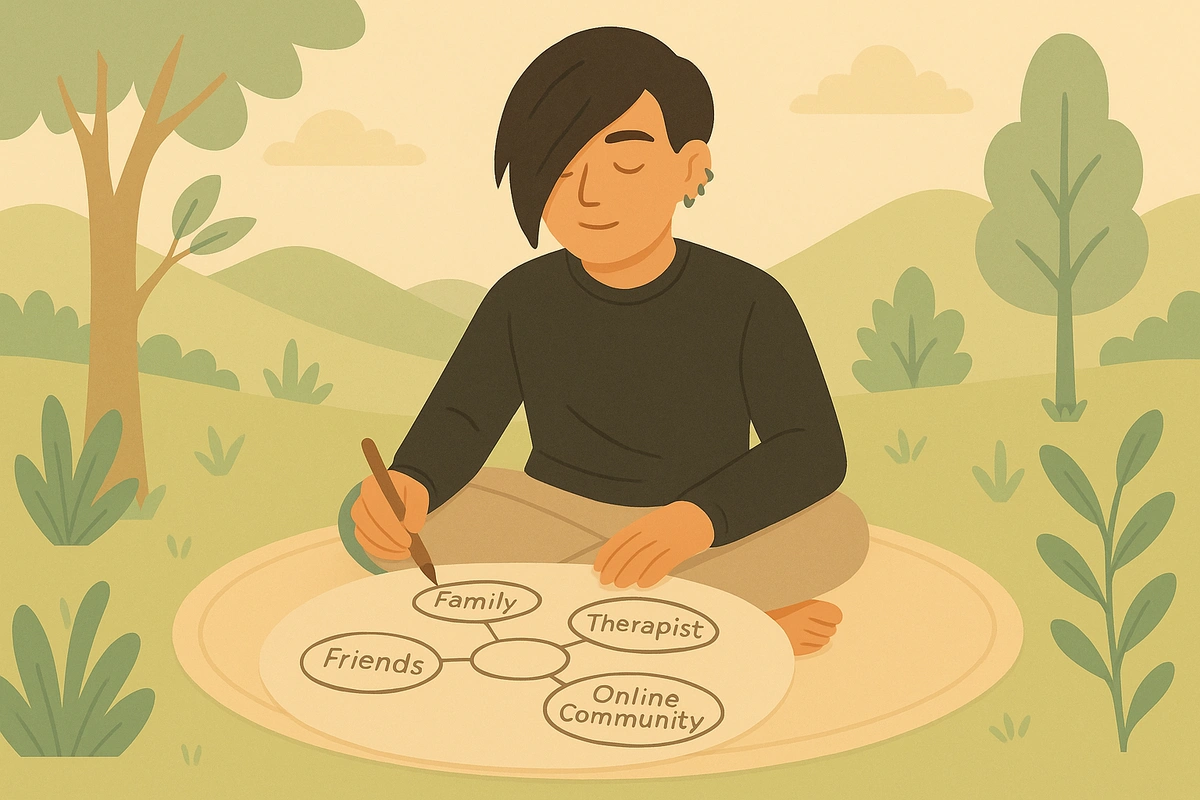A support circle map is a visual blueprint of your personal support network that transforms overwhelming emotions into clear pathways for help, turning isolation into connection through an organized understanding of who can provide specific types of support when you need it most.

Creating a support circle map involves visually organizing the trusted people and resources in your life according to the different types of support they provide. This structured approach helps you identify emotional, practical, and informational support sources while making it easier to reach out during times of distress or crisis.
Your support network exists whether you map it or not, but visualization creates clarity and accessibility when your thinking becomes clouded by anxiety, depression, or overwhelming stress. Research shows that people with clearly identified support systems experience better mental health outcomes and faster recovery from emotional difficulties. This simple mapping exercise transforms abstract relationships into concrete resources you can actively use.
Support circle mapping works by leveraging the brain's visual processing abilities to create clear mental pathways during emotional distress. When anxiety or depression cloud your thinking, the visual representation provides immediate access to concrete options without requiring complex decision-making in the moment.
The mapping process activates what psychologists call "social support mechanisms" - the networks of relationships that buffer stress and promote mental health recovery. Research consistently shows that people with strong, diverse support networks experience lower rates of anxiety and depression, faster recovery from mental health crises, and greater overall life satisfaction.
Creating the map itself provides therapeutic benefits through what researchers describe as "network awareness" - the conscious recognition of available resources that reduces feelings of isolation. This awareness shift helps combat the cognitive distortions common in anxiety and depression that make people feel more alone than they actually are.
The categorization aspect works because different types of support serve different psychological needs. Emotional support provides comfort and validation, practical support reduces concrete stressors, and informational support helps with problem-solving and decision-making. Having all three types readily identified ensures comprehensive care during difficult periods.
Visual mapping also takes advantage of what neuroscientists call "cognitive offloading" - storing important information externally so your brain doesn't have to work as hard to remember and access it during stress. This is particularly valuable because stress hormones like cortisol can impair memory and decision-making abilities.
The exercise builds what psychologists term "collective efficacy" - the belief that you and your community have the resources to handle challenges together. This collaborative mindset reduces the overwhelming feeling that you must cope with everything alone and increases confidence in your ability to navigate difficulties.
"I don't think I have enough people for a support map" - Start with whoever you have, including family members you rarely talk to, acquaintances who might become closer friends, and professional services. Many people underestimate their available support networks.
"I feel uncomfortable asking people for help" - Practice with small, low-stakes requests first to build comfort. Remember that most people feel good about being helpful and that reciprocal support strengthens relationships over time.
"My support people are unreliable or inconsistent" - Include multiple options in each category so you're not dependent on any single person. Consider expanding your network gradually through community activities, support groups, or professional services.
"I don't want to burden anyone with my problems" - Reframe support-seeking as relationship building rather than burden-sharing. Consider how you feel when others ask for your help - most people appreciate being trusted and needed.
"My map feels overwhelming or too complicated" - Simplify by focusing on just 3-5 key people initially, then expand gradually. Use color coding or symbols to make the visual information easier to process quickly.
"I'm worried about maintaining all these relationships" - Your map doesn't require constant maintenance of every relationship. Focus on nurturing a few key connections while keeping others available for specific situations when they might be helpful.